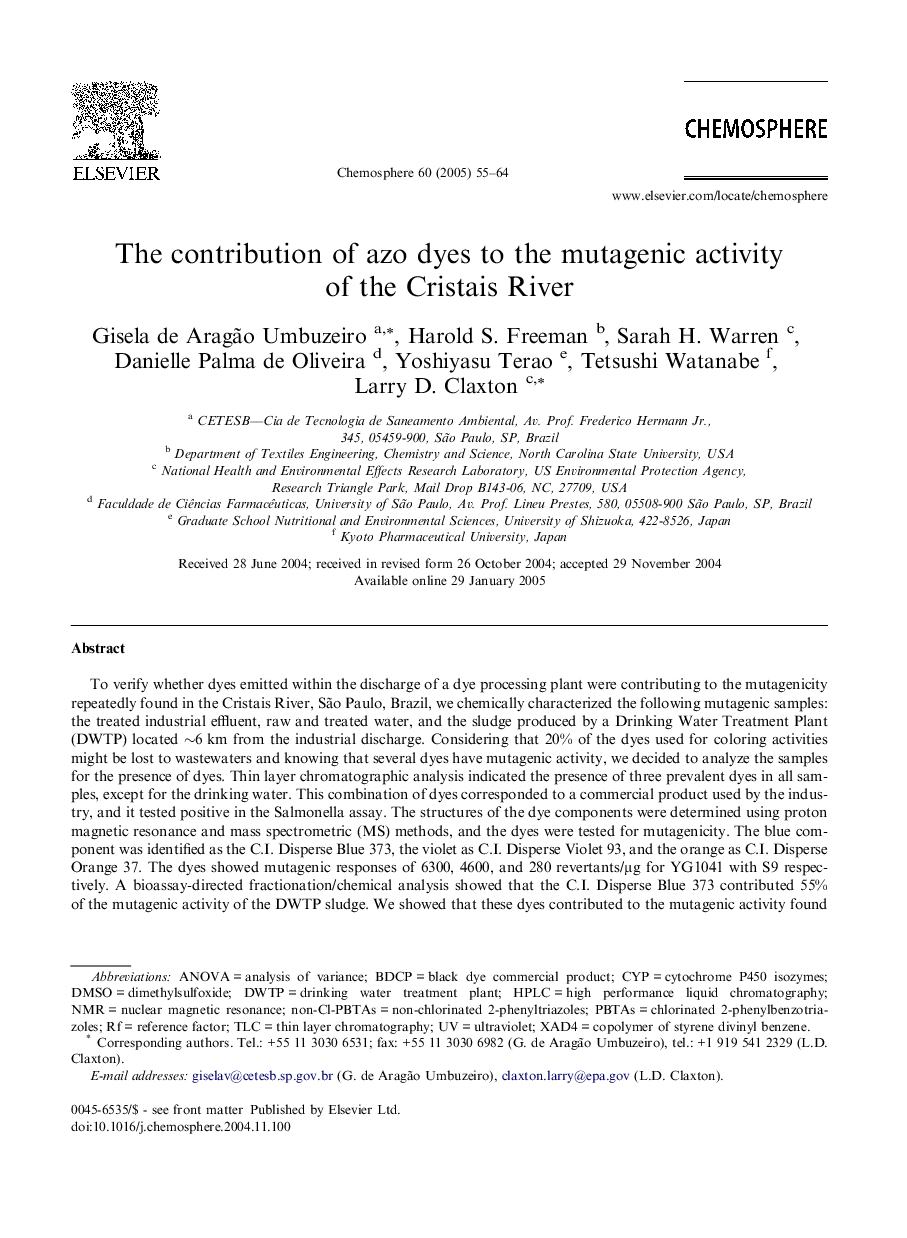| کد مقاله | کد نشریه | سال انتشار | مقاله انگلیسی | نسخه تمام متن |
|---|---|---|---|---|
| 9451601 | 1307831 | 2005 | 10 صفحه PDF | دانلود رایگان |
عنوان انگلیسی مقاله ISI
The contribution of azo dyes to the mutagenic activity of the Cristais River
دانلود مقاله + سفارش ترجمه
دانلود مقاله ISI انگلیسی
رایگان برای ایرانیان
کلمات کلیدی
موضوعات مرتبط
علوم زیستی و بیوفناوری
علوم محیط زیست
شیمی زیست محیطی
پیش نمایش صفحه اول مقاله

چکیده انگلیسی
To verify whether dyes emitted within the discharge of a dye processing plant were contributing to the mutagenicity repeatedly found in the Cristais River, São Paulo, Brazil, we chemically characterized the following mutagenic samples: the treated industrial effluent, raw and treated water, and the sludge produced by a Drinking Water Treatment Plant (DWTP) located â¼6 km from the industrial discharge. Considering that 20% of the dyes used for coloring activities might be lost to wastewaters and knowing that several dyes have mutagenic activity, we decided to analyze the samples for the presence of dyes. Thin layer chromatographic analysis indicated the presence of three prevalent dyes in all samples, except for the drinking water. This combination of dyes corresponded to a commercial product used by the industry, and it tested positive in the Salmonella assay. The structures of the dye components were determined using proton magnetic resonance and mass spectrometric (MS) methods, and the dyes were tested for mutagenicity. The blue component was identified as the C.I. Disperse Blue 373, the violet as C.I. Disperse Violet 93, and the orange as C.I. Disperse Orange 37. The dyes showed mutagenic responses of 6300, 4600, and 280 revertants/μg for YG1041 with S9 respectively. A bioassay-directed fractionation/chemical analysis showed that the C.I. Disperse Blue 373 contributed 55% of the mutagenic activity of the DWTP sludge. We showed that these dyes contributed to the mutagenic activity found in the Cristais River environmental samples analyzed and are indirectly affecting the quality of the related drinking water. Therefore, we believe that this type of discharge should be more thoroughly characterized chemically and toxicologically. Additionally, human and ecological risks associated with the release of dye processing plant effluents should be more fully investigated, especially where the resultant water is taken for human consumption.
ناشر
Database: Elsevier - ScienceDirect (ساینس دایرکت)
Journal: Chemosphere - Volume 60, Issue 1, June 2005, Pages 55-64
Journal: Chemosphere - Volume 60, Issue 1, June 2005, Pages 55-64
نویسندگان
Gisela de Aragão Umbuzeiro, Harold S. Freeman, Sarah H. Warren, Danielle Palma de Oliveira, Yoshiyasu Terao, Tetsushi Watanabe, Larry D. Claxton,